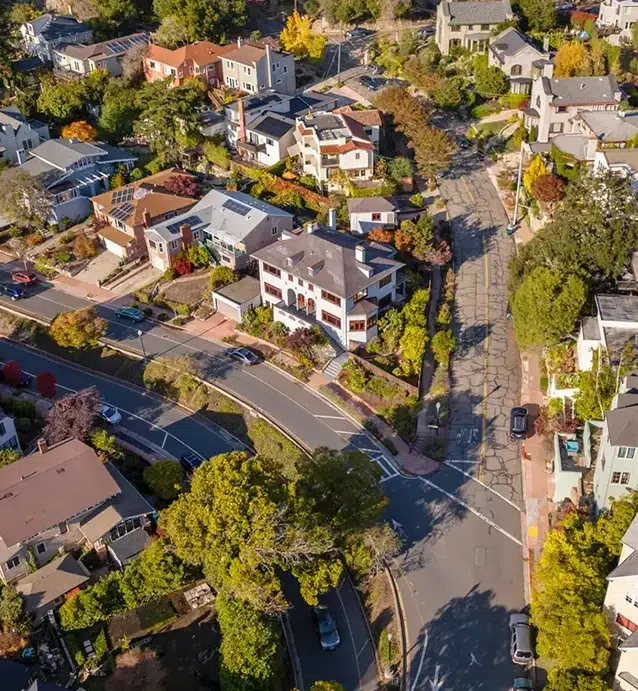
In the bustling urban landscape of San Francisco, understanding easements is crucial for property owners, developers, and anyone involved in real estate transactions. Easement issues under California law are complex.
Whether you are in an easement dispute, you want to create an easement, you worry you might be subject to an easement, or you just want to know what your rights or obligations are due to an existing easement, our law firm help. Contact Estavillo Law Group today.
What Is an Easement?
An easement is a legal right to use another person’s land for a specific limited purpose. Easements can arise in various situations. For instance, a homeowner might need an easement across their neighbor’s land to access a road. Or, a utility company may require one to run cables through private property.
These arrangements are essential in densely populated areas like San Francisco, where adjacent properties often depend on each other for access and utilities.
In real estate law, an easement does not allow the easement holder to occupy the land or exclude the owner from it. Instead, it provides a specific right, like the passage or utility access, without transferring ownership of the land.
You might be wondering whether your property is subject to an easement, whether you can get around an existing easement, or how to create a new one. This article will explain in more detail the nuances of various easements.
What Are the Types of Easements?
Easements Appurtenant vs. Easements in Gross
Easements are classified into two main types: easements appurtenant and easements in gross. Here’s the difference: Ask, “is this a neighbor easement? Or is it an easement that doesn’t deal with neighboring properties?”
An easement appurtenant is attached to once piece of land and benefits the property adjacent to it. On the other hand, an easement in gross benefits a specific individual or entity for a specific purpose, not tied to property ownership.
Express Grant or Reservation vs. Implied Grant or Reservation
Another nuance in easement law is whether the easement was clearly created (like through a written contract) or whether it is implied. An express easement is created by a written agreement between property owners. In contrast, an implied easement may arise from long-standing practices or necessities, even without written documentation.
Other Types of Easements
Other common easements include:
- Prescriptive Easements: These are made through continuous and open use over a period. For example, if neighbor A has been using neighbor B’s dirt road to reach a public fishing hole for 20 years, this could be a prescriptive easement.
- Easements by Necessity: Arise when a property is landlocked and needs access to a public road. For example, Neighbor A can’t reach the road without using Neighbor B’s gravel path. There may be an easement by necessity.
- Easements by Condemnation: Created through the government’s power of eminent domain.
- Dedication Easements: Created when a property owner dedicates land for public use, such as sidewalks.
How Can You Create An Easement?
Creating an easement in California typically involves a formal process, especially for express easements. This process includes drafting a legal document that defines the easement’s terms, location, and purpose. The document must be signed by both parties and, in most cases, recorded with the county recorder’s office.
If you think you have an implied easement, it can be hard to establish. This will usually involve legal proceedings to determine the existence and scope of the easement.

What Rights Does an Easement Give You?
Holding an easement gives you specific rights over another’s property. These rights are limited to the terms of the easement agreement.
For instance, a utility easement allows the utility company to enter the property to maintain or repair utility lines but does not permit them to make broader use of the land. They can’t decide to start raising cattle on that land. They have to stick to what the easement has granted.
California law also has rules on upkeep of the easement, which can be a little complicated. You’ll want to consult a land use attorney to make sure you are meeting your obligations.

How Do You Know If A Property Is Subject to an Easement?
Determining if a property in San Francisco is subject to an easement typically involves a title search. This search, can be conducted by you, if you know what you are looking for, or an attorney. Either way, the search will reveal any recorded easements attached to the property. It’s essential for property buyers in San Francisco to perform this due diligence to understand any limitations on their property rights.
Contact Estavillo Law Group today if you are concerned about whether your property is subject to an easement. A land use attorney can help you figure out what obligations you may have.
How Can You Eliminate An Easement?
Eliminating an easement can be challenging, especially if the easement holder wants to keep it. However, certain situations can lead to termination, such as when the purpose of the easement is no longer relevant, or the properties involved have changed significantly.
Another way to eliminate an easement is through a release agreement, where the easement holder agrees to relinquish their rights, typically in exchange for compensation.
Why You Need a Real Estate Attorney for Easements
Understanding the types, creation, rights, and termination of easements can help property owners navigate the challenges and opportunities that come with property ownership in this dynamic city. For specific legal advice and services related to easements, consider consulting with a knowledgeable real estate attorney in San Francisco. Call Estavillo Law Group today.
